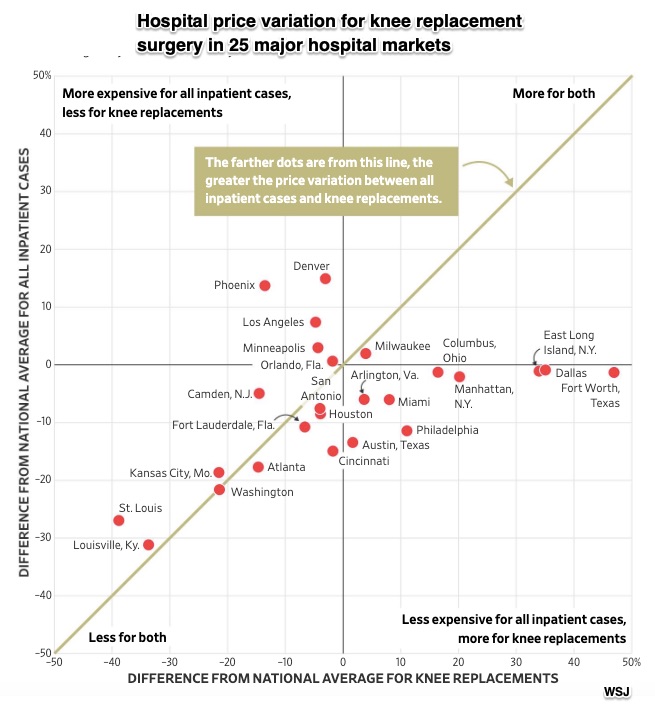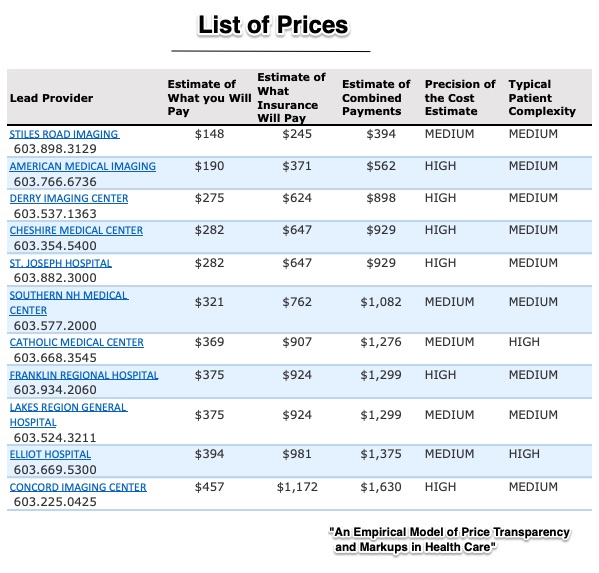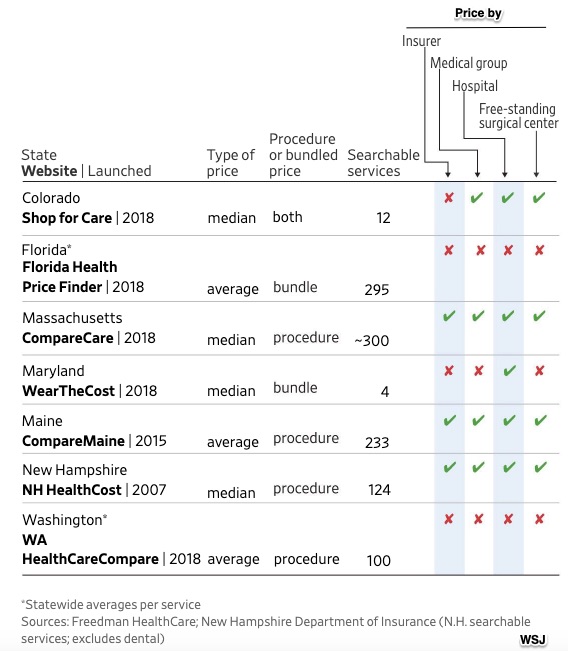Where you live determines the price of knee replacement surgery. With the Dallas/Fort Worth region the highest and Louisville the lowest, it could cost 50% above or 40% below the national average:
Even among our local hospitals, many of us do not know these price differences.
But soon we might. President Trump just announced that hospitals and other healthcare providers will have to publicize the rates they charge insurers. First though, the regulators have to create the rules.
So, if we knew the price of an MRI, a hip replacement, or a blood test, we would choose the cheapest. Then, if all of us price shop, we create the competition that gets us higher quality and lower prices. Individually and as a nation, our healthcare costs stop soaring.
Not necessarily.
Price Transparency in New Hampshire
Since 2007 New Hampshire has required healthcare price transparency. Through a website, consumers can search for the prices of procedures and tests. Someone who needed a brain MRI (in 2015) could have accessed the following list of prices:
The problem is that most people did not go to the website. Why?
- They faced information barriers. For a back MRI, someone might not have known if it was supposed to be lumbar or thoracic. They might not know the technical name the provider is using (which could differ from one provider to the next.) They needed to know if they were looking for the facility costs, the physician, the radiologist, and the post-op care–the bundle–or several or one part of a procedure. Those who were insured had to calculate what might be out-of-pocket.
- There were incentive barriers. If you thought your insurance company covered most of what you needed, you had little reason to worry about the cost. Furthermore, many of us value our relationships with our doctors. Not only do we do what they suggest but also, medical centers like us to coordinate care under one roof. I wonder also if people were dealing with information overload.
Other States
Among the 20 or so states pursuing transparency, some bundle procedures while others publish them individually. Some make them available to consumers through a website while others do not. Joining New Hampshire, six states have consumer-price websites:
You can see where all of this takes us. Economists call it friction.
Our Bottom Line: Friction
Just like in physics, friction slows down movement. With healthcare price shopping, information and incentive barriers create the friction. Especially when dealing with illness, they constrain the shopping around that price transparency is supposed to encourage.
For a healthcare price transparency government initiative, the traditional economic logic takes us to the law of demand. Lower prices make us willing and able to buy more. However, it’s not that easy. From there, we need the behavioral economics to take a look at the nudges we need to smooth out the friction.
My sources and more: Together, this WSJ article, this paper and this paper have all of the facts about healthcare price transparency. Then, for more, WSJ looked at the price of knee surgery and, as always Kaiser has all the facts.









